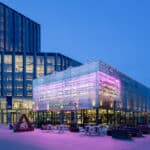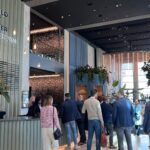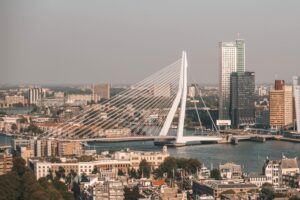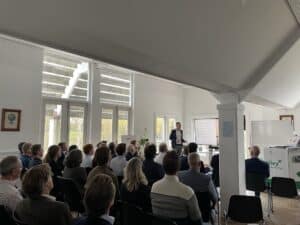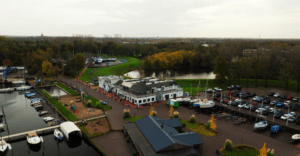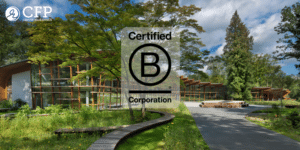
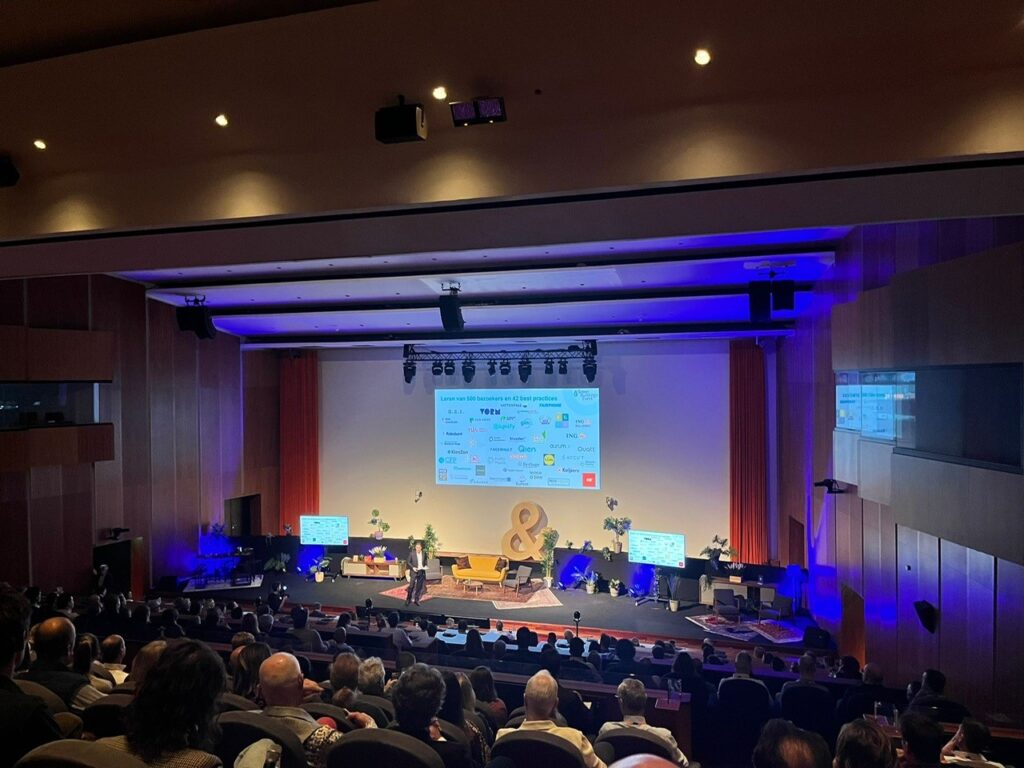
The Green Buildings Event 2024: sustainable in one day with practical tools from surprising disciplines
CFP’s Green Buildings Event was alive with inspiration and intrinsic motivation to become more sustainable. Speakers from various sectors managed to entertain, encourage and excite the audience. Over 350 visitors went home with a great deal of inspiration and new ideas. Wondering what you missed or just reading over the topics covered again? In this article, we go through the highlights of the day.
Want to learn more? Read all about the Green Buildings Event here.
The need for long-term vision and scale
The opening theme of The Greatest Showman coming through the speakers, professionals from various sectors on the edge of their seats and speakers bursting with energy and inspiring insights: they set the scene for the CFP Green Buildings Event.
This 18th edition was hosted by the Rabobank headquarters. Denise Notenboom, director of Real Estate Finance, kicked off with a topic close to home for much of the audience: making property more sustainable. She advocated for a long-term vision, which calls for starting conversations now to integrate sustainability into financial choices. The goal? As far as Rabobank is concerned, all buildings should be at least energy label A.
Macroeconomist Ester Barendregt took over the microphone from her colleague Denise and provided a great example showing that a long-term perspective requires action now. For example, although the water levels rising will not be really problematic until after 2100, reaching well over one metre, we need to think about this now when building new houses. After all, the lifespan of houses extends to this period.
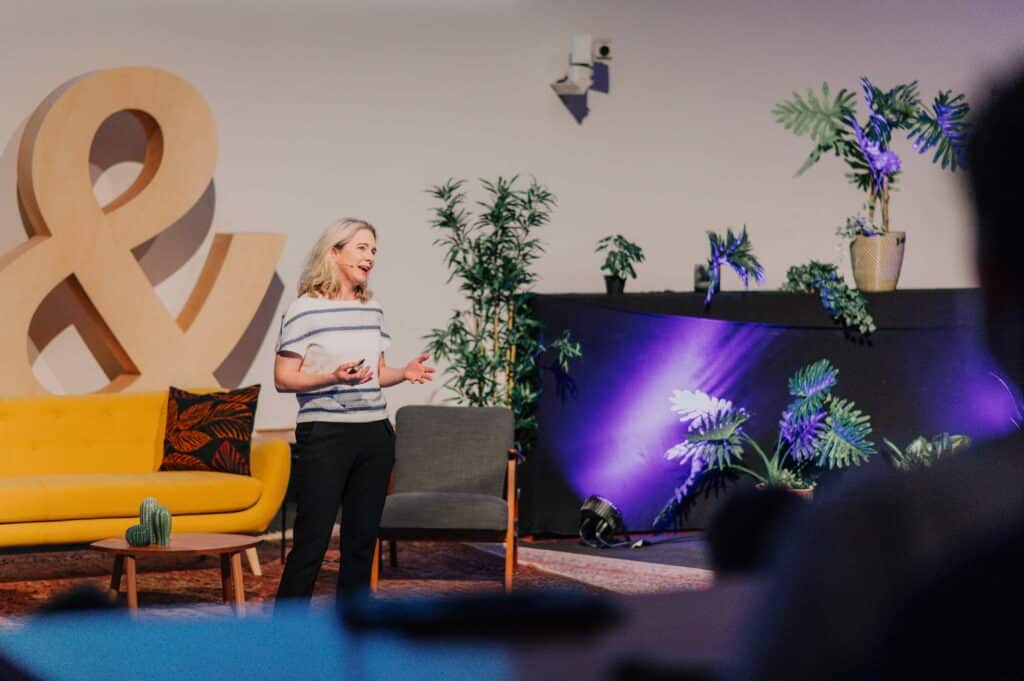
Foundation problems are one of the physical risks facing many houses. If there is transparency on this, part of the solution can be found in the sale price of houses. Indeed, research shows that openness about foundation problems leads to a 12% price drop on average, which corresponds to the average cost of foundation repair. A climate label for houses could provide the necessary transparency, thus providing a large-scale solution. Another solution that Ester advocates for is a sustainability obligation when purchasing private homes. This ensures scale contributing to the future-proofing of our properties.
Lessons from space
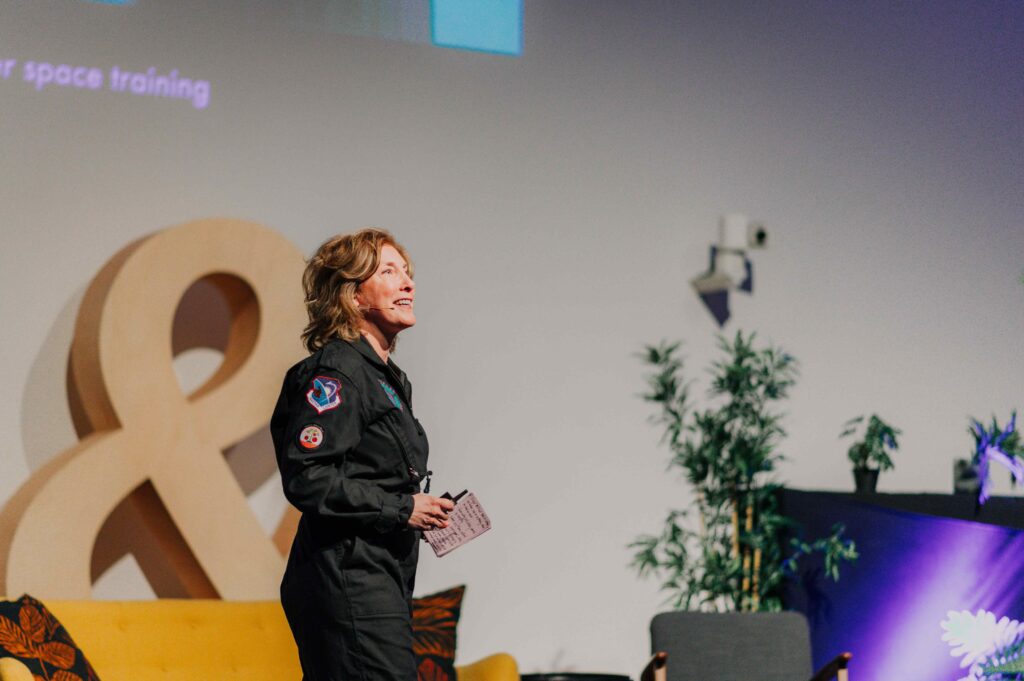
Besides a lesson in dedication, the audience also gained interesting insights into dealing with resistance and fears, which regularly pop up in relation to sustainability and innovation as well. Bobusa changed from a word with random letters into a useful mnemonic device to create pause and consciously perceive both environmental factors and internal feelings. The resulting calmness creates room for inner wisdom. Not only is this calmness essential for astronauts, it also facilitates clarity, relaxation and fun for all non-astronauts, as Mindy notes in her popular training sessions.
From heavy caterpillar to intelligent butterfly
World-renowned zeitgeist analyst Christine Boland stepped onto stage with a beautiful metaphor: we have become a heavy, stuffed caterpillar and need to transform ourselves into light butterflies that use the ingredients of a caterpillar differently. According to Christine, humans need to redefine themselves in relation to the environment. It is time for a metamorphosis. That sounds – and is – big.
To make things a bit more tangible, Christine reached out to the audience with three guidelines: principles of progress to restore balance. One of the principles is to facilitate ‘meaningfulness’. Jumbo’s popular chat registers and the McDonald’s changing rooms at the train station during Gay Pride are telling examples.
As a second principle, Christine encouraged people to reflect on how to create value from your values, as a person, but also as a brand and company. The third principle of symbioscene goes beyond sustainability and revolves around thriveability: living in balance with nature and all of the environment. This is all about 1 + 1 = 3 ideas.
The resilience of a spider’s web
As an ecologist, Sterrin Smalbrugge is able to clearly translate principles from nature into a new sustainability perspective for our society. Whereas many visualisations of society and relationships use a pyramid shape, Sterrin shows that a spider’s web is a much better shape. The more threads we miss because animals and mechanisms are lost, the less resilient the web and thus the earth becomes. Sterrin has a wealth of good examples at hand, which she passionately shared. One example is wolves – their presence has such an effect on the environment that they can even affect the flow of rivers.
So what we do to the web – to nature – we end up doing to ourselves. Eradicating animals in the short term because they disturb our living comforts makes for a less resilient earth in the long term.
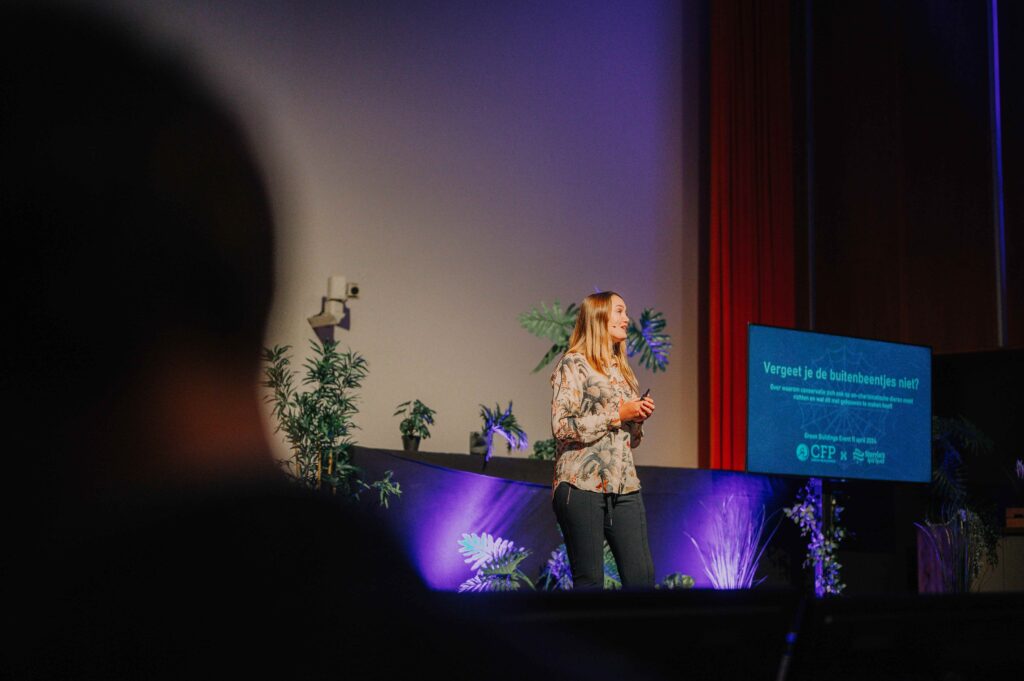
Changing an entire chain from the bottom up
Investigative journalist Teun van de Keuken told the story of Tony’s Chocolonely, which he founded as a result of his programme Keuringsdienst van Waarde. Tony’s decided to stop the finger-pointing and take responsibility by marketing a chocolate bar that does not involve slavery. Besides providing an insight into the far-reaching complexity of the supply chain, Teun also showed how bold choices can have large-scale effects. Tony’s decided to drop its USP – slave-free chocolate – by opening up their innovative process as a model to the entire chain. After all, sustainability is worth more to Tony’s than its own brand or brand growth.
Major stakeholders in the industry went along with this, and real change was thus brought about. Tony’s slave-free traceability system is now the rule rather than the exception in the chocolate market. You can translate this approach to almost any sector. If you have built a smart system for making buildings more sustainable or monitoring data, why not make it open source so that you can boost the sustainability of the entire built environment?
Chasing big dreams
It is not just Mindy Howard who knows what she wants and what she bases her choices on: Jaap Korteweg does not shy away from an ambitious goal either. For the farmer’s son who took over his father’s business, plant-based food is now a no-brainer. As far as he is concerned, the statistics speak volumes: if we are using 80% of agricultural land for meat, which represents only 20% of our diet, something is going wrong. With De Vegetarische Slager (the vegetarian butcher) and Those Vegan Cowboys, Jaap is therefore developing plant-based alternatives that are produced much more efficiently and meet the same needs, including with regard to taste. If it tastes just as good, is produced with less environmental impact and is much more efficient: then sticking to old production methods is just not an option.
Best practices
Sustainable in one day: that was the title of the 18th Green Buildings Event. As if the practical tools and new motivation from the speakers on the big stage were not enough, there were also the 42 (!) best practices. In subgroups, a variety of entrepreneurs and professionals from various sectors presented concrete tips & tricks relating to sustainability. From Oyster Heaven to Pretty Plastic, Lidl, the Dutch Green Building Council, Quatt, Signify and Fairphone, they shared their innovation, methods or challenges.
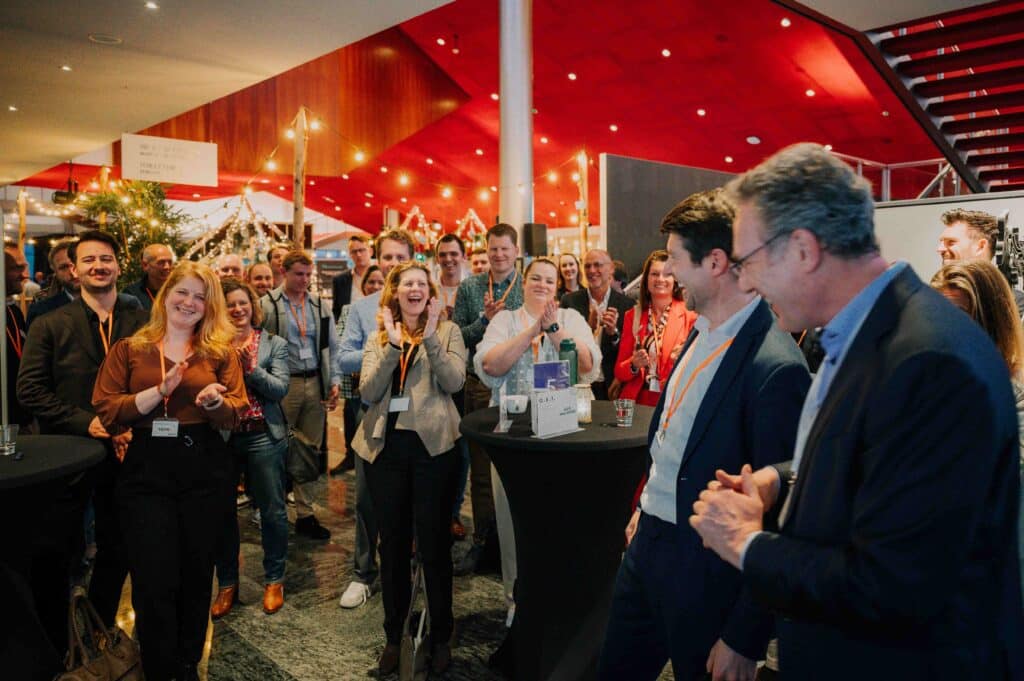
Students4Sustainability from TU Delft brought together the insights from the various presentations in a wrap-up. What stuck out to them? The practicality of all the presentations, as well as the passion and intrinsic motivation that were clearly palpable. True pricing as an internal and external evaluation method, discussed by Ecoteers, and the focus on handprint as a counterpart to footprint, discussed by Zustaina, were cited in the wrap-up. The biocompact water-free urinal was also touted, with a wink, as a suitable gift for family members, who rate their own homes or landlords as less suitable for this innovation.
In order to achieve sustainability at a rapid pace, we need all generations on board. Particularly also the new generation. Gen Z was in the spotlight at the Green Buildings Event: Christine Boland emphasised this generation’s completely different mindset: ‘They are asking for transparency and for mistakes to be shared, rather than hidden.’ The Students4Sustainability students added in their wrap-up: ‘We really want to make strides forward, so give us the space we need and help us where necessary.’
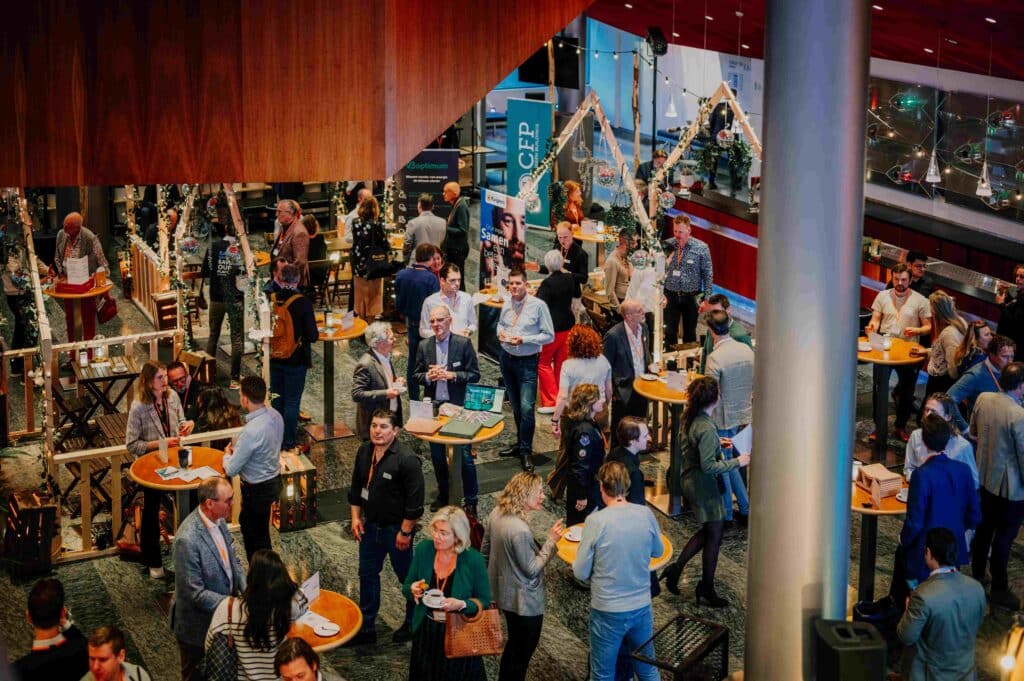
Want to see more of the Green Buildings Event?
We’re showcasing highlights from the Green Buildings Event 2024 here.
